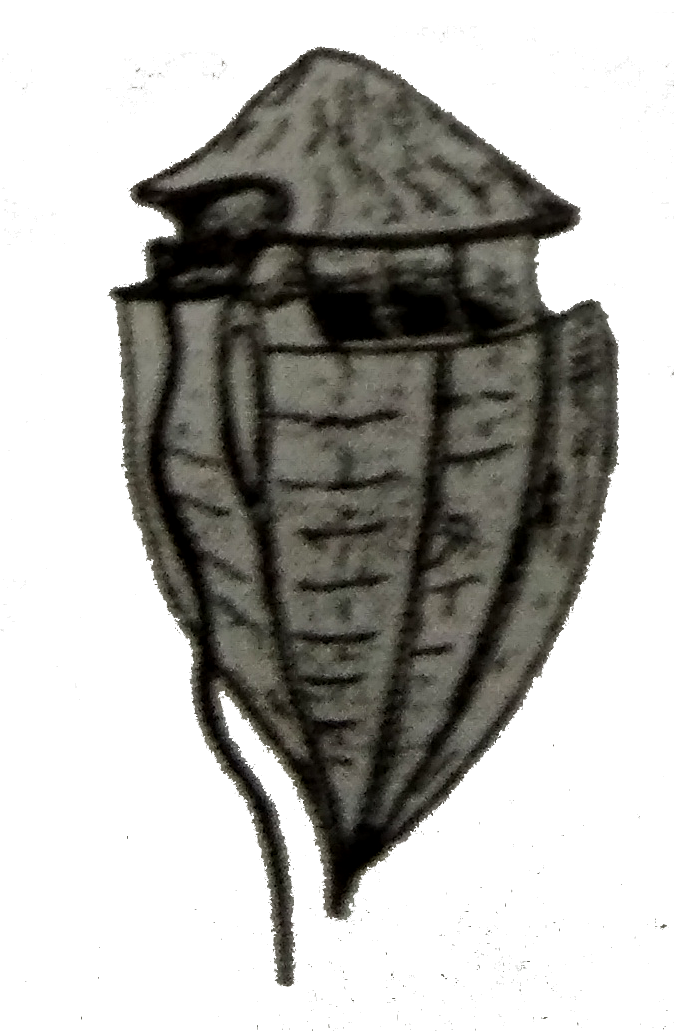Select the group of organisms given below those have disploblastic members only.
Ctenoplana, Taenia , Fasciola
Euspongia , Physalia , Meandrina
Wuchereria, Culex, Limulus
Aedes, Ascaris, Hydra
The correct Answer is:B
To solve the question of identifying the group of organisms that have only diploblastic members, we can follow these steps:
1. Understand Diploblastic Organisms:
- Diploblastic organisms are those that develop from two embryonic layers: the ectoderm and the endoderm.
2. Identify Relevant Phyla:
- The main phyla that contain diploblastic organisms are:
- Porifera (sponges)
- Cnidaria (jellyfish, corals, sea anemones)
- Ctenophora (comb jellies)
3. Evaluate the Options:
- We need to analyze the given options to see which ones consist entirely of organisms from the diploblastic phyla.
4. Option A: Tenoplana, Taenia, Fasicola
- Tenoplana belongs to Ctenophora (diploblastic).
- Taenia and Fasicola belong to Platyhelminthes (triploblastic).
- Conclusion: This option is not entirely diploblastic.
5. Option B: Euspongia, Physalia, Meandrina
- Euspongia belongs to Porifera (diploblastic).
- Physalia (Portuguese man o' war) and Meandrina (a coral) belong to Cnidaria (diploblastic).
- Conclusion: This option consists entirely of diploblastic organisms.
6. Option C: Vacheria, Culex, Limulus
- All these organisms belong to Arthropoda (triploblastic).
- Conclusion: This option is not diploblastic.
7. Option D: Aedes, Ascaris, Hydra
- Aedes belongs to Arthropoda (triploblastic).
- Ascaris belongs to Nematoda (triploblastic).
- Hydra belongs to Cnidaria (diploblastic).
- Conclusion: This option is not entirely diploblastic.
8. Final Answer:
- The only option that consists solely of diploblastic members is Option B: Euspongia, Physalia, Meandrina.
Summary:
The correct answer is Option B, which includes organisms from the phyla Porifera and Cnidaria, both of which are diploblastic.
- Diploblastic organisms are those that develop from two embryonic layers: the ectoderm and the endoderm.
- The main phyla that contain diploblastic organisms are:
- Porifera (sponges)
- Cnidaria (jellyfish, corals, sea anemones)
- Ctenophora (comb jellies)
- We need to analyze the given options to see which ones consist entirely of organisms from the diploblastic phyla.
- Tenoplana belongs to Ctenophora (diploblastic).
- Taenia and Fasicola belong to Platyhelminthes (triploblastic).
- Conclusion: This option is not entirely diploblastic.
- Euspongia belongs to Porifera (diploblastic).
- Physalia (Portuguese man o' war) and Meandrina (a coral) belong to Cnidaria (diploblastic).
- Conclusion: This option consists entirely of diploblastic organisms.
- All these organisms belong to Arthropoda (triploblastic).
- Conclusion: This option is not diploblastic.
- Aedes belongs to Arthropoda (triploblastic).
- Ascaris belongs to Nematoda (triploblastic).
- Hydra belongs to Cnidaria (diploblastic).
- Conclusion: This option is not entirely diploblastic.
- The only option that consists solely of diploblastic members is Option B: Euspongia, Physalia, Meandrina.
The correct answer is Option B, which includes organisms from the phyla Porifera and Cnidaria, both of which are diploblastic.
Topper's Solved these Questions
- BOOK - CENGAGE BIOLOGY ENGLISHCHAPTER - ANIMAL KINGDOMEXERCISE - Exercise Assertion -Reasoning Questions6videos
ANIMAL KINGDOM
- BOOK - CENGAGE BIOLOGY ENGLISHCHAPTER - ANIMAL KINGDOMEXERCISE - Exercise Chordata152videos
ANIMAL KINGDOM
- BOOK - CENGAGE BIOLOGY ENGLISHCHAPTER - ANATOMY OF FLOWERING PLANTS EXERCISE - ARCHIVES38videos
ANATOMY OF FLOWERING PLANTS
- BOOK - CENGAGE BIOLOGY ENGLISHCHAPTER - BIOMOLECULESEXERCISE - ARCHIVES26videos
BIOMOLECULES
Similar Questions
Knowledge Check
- Question 1 - Select One
Which group of organisms is represented by the given figure?
 ADiatoms and desmids (golden algae)BDinoflagellatesCBacteriaDEuglenoids
ADiatoms and desmids (golden algae)BDinoflagellatesCBacteriaDEuglenoids
From the organisms given below, select the odd one on the basis of symmetry shown by them.
View SolutionSelect first group of organisms to colonise rocks and hence, are of great ecological importance.
View SolutionPick out lectin from those given below:
View SolutionSelect the correct statement from the ones given below
View SolutionSelect the correct statement from the ones given below
View SolutionSelect the correct statement from options given below.
View SolutionSelect the pseudocoelomtates from the list of organism given below.
View Solution

